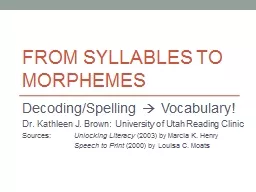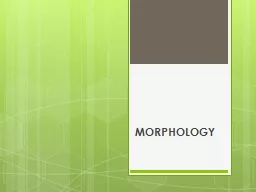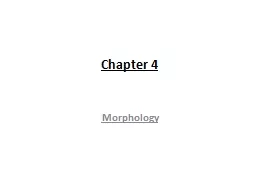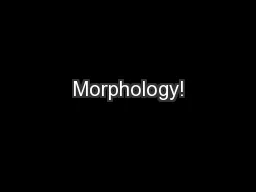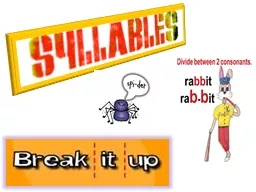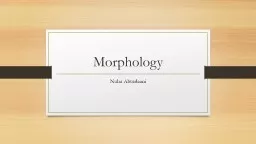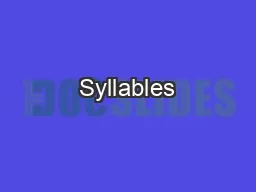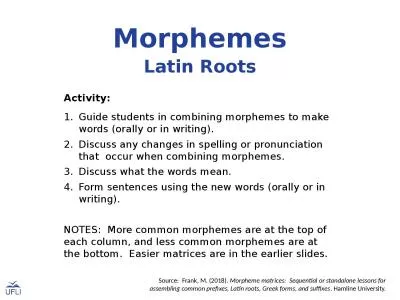PPT-From syllables to morphemes
Author : marina-yarberry | Published Date : 2017-12-07
DecodingSpelling Vocabulary Dr Kathleen J Brown University of Utah Reading Clinic Sources Unlocking Literacy 2003 by Marcia K Henry Speech to Print 2000 by Louisa
Presentation Embed Code
Download Presentation
Download Presentation The PPT/PDF document "From syllables to morphemes" is the property of its rightful owner. Permission is granted to download and print the materials on this website for personal, non-commercial use only, and to display it on your personal computer provided you do not modify the materials and that you retain all copyright notices contained in the materials. By downloading content from our website, you accept the terms of this agreement.
From syllables to morphemes: Transcript
Download Rules Of Document
"From syllables to morphemes"The content belongs to its owner. You may download and print it for personal use, without modification, and keep all copyright notices. By downloading, you agree to these terms.
Related Documents

